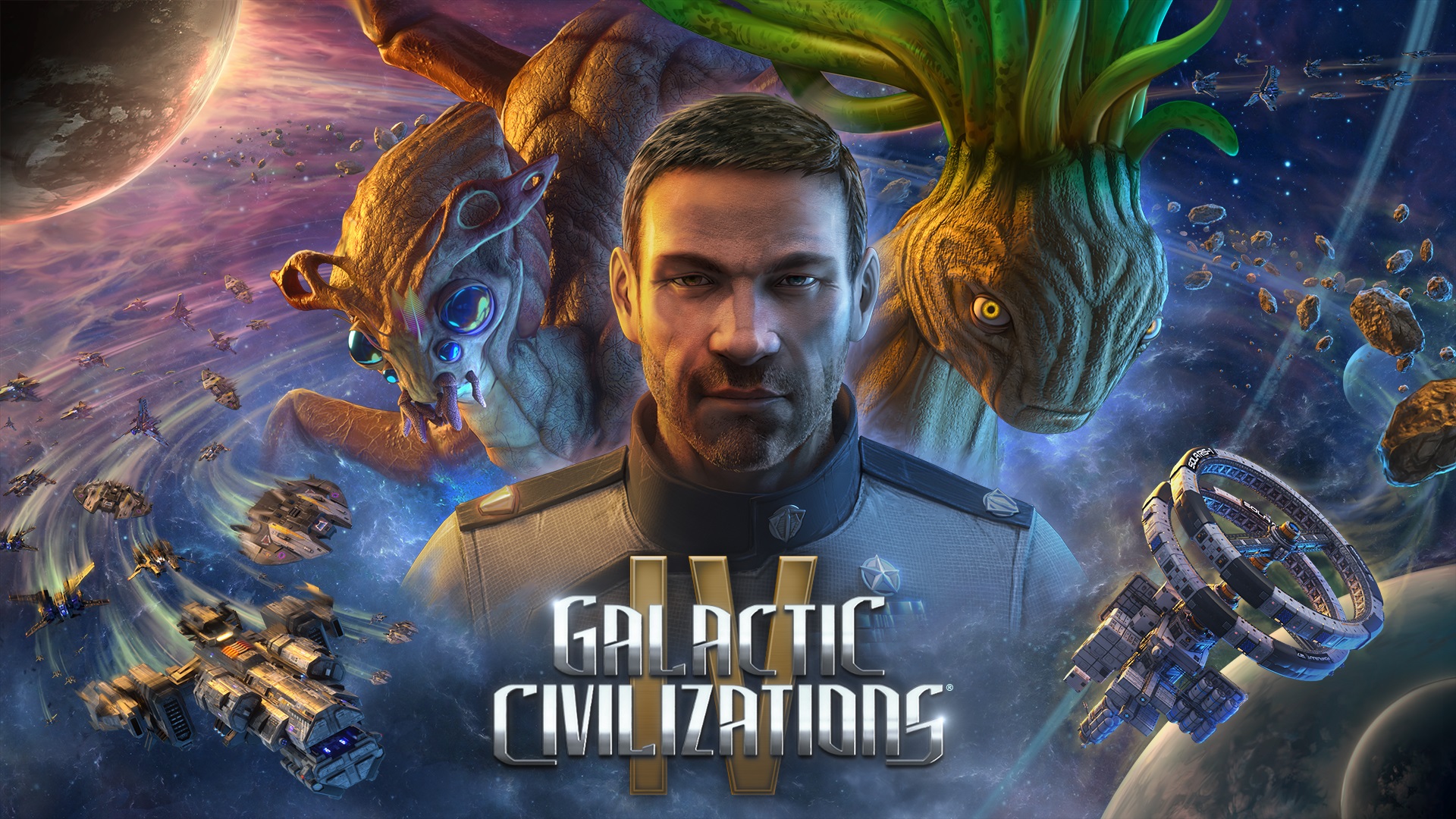
Stardock Corporation has announced Galactic Civilizations IV for PC, and its set for a release sometime in 2022.
While Galactic Civilizations IV won’t ship until 2022, a playable alpha is set to launch sometime this summer. You can also wishlist the game over on the official Galactic Civilizations IV website.
Here’s the announcement trailer:
Here’s the first screenshots and artwork:
Here’s a rundown on the game, via its official website:
WIN THROUGH WARFARE, PLANETARY CONQUEST, CULTURAL DOMINATION, POLITICAL ALLIANCES OR TECHNOLOGICAL SUPREMACY.
Galactic Civilizations is a space-based 4X strategy game set in the 24th century starting when humans have discovered a faster-than-light travel called Hyperdrive. Humans and aliens compete for domination of our galaxy.
The player begins with only their home planet and must research new technologies, explore the known galaxy, colonize new worlds while keeping their people at home happy. At the same time, players engage in trade, diplomacy, intrigue and war with alien civilizations.
NEW IN GALCIV IV
Building on the strengths of the previous entry in the series, Galactic Civilizations IV includes the biggest changes we’ve ever made to the series. These new features include:
- Leader Characters – We abstract game elements such as population, diplomats, leaders, generals, etc. with Leader characters. Each of these characters has their own set of attributes, strengths and weaknesses and relationship with the player. Leader characters give the player a lot more flexibility and agency in how they run their civilization.
- Star Sectors – Previous Galactic Civilizations games existed in a single map of various sizes. Players who enjoyed big maps had to deal with the downside of much of the map being “empty” (no stars or planets). Moreover, exploration of the game was the same on turn 1 as it was on turn 300.
- Galactic Civilizations IV introduces star sectors. Each sector is akin to a map in Galactic Civilizations III. Most of these sectors are similar to tiny to large GalCiv III maps that represented a section of the overall galaxy that the player was trying to conquer. Now, there can be anywhere from one to dozens of star sectors to explore.
- The early part of the game involves the traditional exploration phase. However, other star sectors can only be reached through subspace streams which require a technology to reach. Thus, a second phase of exploration and conquest is entered once this technology is achieved.
- Star sectors allow us to have much bigger maps since we are able to do away with the dead-space tiles which in previous games still consumed memory and more relevantly, giant pathfinding tasks which always forced us to limit the maximum sizes of maps.
- A New Combat System – Previous GalCiv games resolved combat in a single turn regardless of the scale of forces. Now, once the forces get big enough, a turn of combat may not destroy all of a fleet, allowing players to alter tactics, retreat or call in reinforcements.
- A New Invasion System – Depending on the population and defenses of the world, invasions no longer necessarily resolve in a single turn. This allows for more strategic choices for players as a player cannot simply sneak in and conquer a capital world in the middle of an enemy empire. Not that you would do that, dear reader…
- True Colonies – In previous games, players had to manage every single planet no matter how marginal it was. Players could assign an AI governor to the planet to automate this process but this was rarely satisfying.
- GalCiv IV flips the concept of governors on its head: By default, planets aren’t managed at all. They simply provide resources (tech, minerals, wealth, food) to the nearest “core” world. Players can then decide if they want to manage a world by assigning a governor to it, which turns that colony into a core world. The governor doesn’t manage anything but instead provides a series of bonuses to the planet based on their character. Of course, have too many colonies feeding a core world and that governor may decide he or she doesn’t need you anymore and rebel.
- Having true colonies is a feature that is so obvious in hindsight that we’re baffled we didn’t come up with it sooner. In 4X games, the late game stall is almost entirely caused by having to micro manage too many planets, cities, whatever. Here, players will tend to only want to manage the top handful of worlds and leave the rest as colonies whose resources supercharge their associated core world.
Enhanced Multiplayer
Unlike in Galactic Civilizations III where multiplayer was simply a single player game with other people instead of AI controlling things, GalCiv IV’s multiplayer will include a robust set of features that make it possible to play a GalCiv IV game with multiple people in mind. This includes better support for co-op, as well as scenarios where the game could be won in less than an hour.
Story-Driven Missions
Rather than having a campaign, the sandbox game is instead getting story-driven missions. These are events and anomalies that generate a mission for the player which provides various benefits and challenges, as well as ensures that each game feels like its own epic story.
Deeper Research
Galactic Civilizations is known for big tech trees. However, we were always limited by how we did the UI. We had to keep each path relatively narrow so that the player didn’t have to choose between 20 or 30 technologies.
Now, the number of technologies to choose from at a given time is limited to the top 5 (which can be upgraded to 7 later on).
During the early game, this won’t be any different than it was in previous games. But later, it requires the player to make some tough choices since every technology has an “innovation rating,” which determines how likely it will be picked as one of those 5 technologies.
Players can press an “inspire” button which will select a new group of 5 techs, but the cost for those techs goes up for each time the inspire button is pressed.
This allows us to have a much, much broader and deeper technology tree than we have in the past. In short, we can basically go nuts with it.
Mixed Populations
Because populations are now abstracted into leader characters (as in, instead of having a population of 5 on a planet you now have 5 citizen characters), it means that when you conquer a planet (or assimilate it, or trade for it, or simply get immigration) you can end up with alien characters on your worlds.
Different species have different strengths and weaknesses, as well as different levels of xenophobia (i.e. living on planets with other species) that allow players more control and flexibility and challenge for dealing with their worlds.
Ideology
In GalCiv I and II we had a good/neutral/evil set of morality choices players could make. GalCiv III tried a different system with limited success.
Galactic Civilizations IV has a 4-axis system: Collectivist, Authoritarian, Individualist, and Libertarian. Player choices in the game will give them points in one of these 4 areas, allowing them to unlock new ideology perks that give them new features and bonuses (as well as penalties).
Executive Orders
Galactic Civilizations IV introduces the concept of “Control”. Control involves how much direct authority you have over your civilization. Control acts as another resource you can use to make direct decisions on the map.
For example, at the start of the game, the player has direct control over the home world which generates control for the player. Executive orders include things like being able to fast build ships and improvements, seize cargo from the private sector, declare martial law, hold festivals, etc.
One design benefit from this is that the early part of the game includes a lot of available executive orders which players can choose from to help jump-start their game in the direction they’re interested in going.
Much More
These are just some of the more obvious changes to the game. We hope you like what you’ve already read and we can’t wait for you to play the game!








